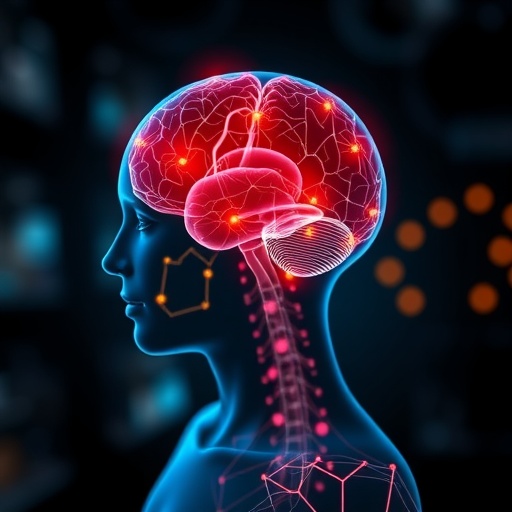In a groundbreaking advancement that could redefine treatment paradigms for substance use disorders (SUDs), researchers have unveiled a novel protocol exploring the application of transcranial direct current stimulation (tDCS) as a supplementary intervention aimed at modulating inhibitory control and craving. Published in BMC Psychology, the upcoming randomized controlled study authored by Vollstädt-Klein, Türkmen, Grundinger, and colleagues seeks to unravel the potential of this non-invasive neuromodulation technique to enhance therapeutic outcomes in individuals battling addiction.
Substance use disorders pose a formidable challenge to public health worldwide, characterized by compulsive drug seeking and use despite harmful consequences. Conventional treatments, although effective for some, often fall short in addressing the complex neural underpinnings that drive craving and impaired self-control—two cardinal features that perpetuate addiction cycles. The introduction of tDCS into this arena represents a thrilling frontier, capitalizing on its ability to subtly modulate brain activity with precision and safety.
Transcranial direct current stimulation involves delivering a weak electrical current, typically in the range of 1 to 2 milliamperes, through electrodes placed on the scalp. This current gently alters neuronal excitability by shifting the resting membrane potential, thereby influencing the likelihood that neurons will fire. Unlike more invasive techniques, tDCS is painless, well tolerated, and has shown promise across various neuropsychiatric conditions. Its utility in modulating the prefrontal cortex—the brain region heavily implicated in executive functions such as inhibitory control and decision-making—is of particular relevance to addiction research.
The study protocol detailed by Vollstädt-Klein et al. meticulously designs a randomized, placebo-controlled trial to investigate whether adjunctive tDCS can reduce craving intensity and improve inhibitory control in individuals diagnosed with substance use disorders. Participants will be divided into experimental and sham stimulation groups to ensure rigorous evaluation of the intervention’s efficacy and control for placebo effects. Through standardized cognitive assessments and craving scales, the trial aims to elucidate tDCS’s therapeutic mechanisms and quantify its clinical benefits.
One of the pivotal rationales behind this research lies in the observable dysfunctions within the frontal-striatal circuitry among individuals with addiction. These neural pathways are central to exerting self-control and suppressing maladaptive behaviors. Dysregulation in these networks often manifests as diminished capacity to resist drug-related cues, leading to relapse. By targeting the dorsolateral prefrontal cortex (DLPFC) with tDCS, the study aims to enhance cortical excitability and strengthen cognitive control circuits, potentially restoring balance in neural processes that addiction disrupts.
The promise of tDCS is magnified by its adaptability and cost-effectiveness compared to other neuromodulation techniques such as transcranial magnetic stimulation (TMS). Its portability and straightforward application make it a feasible candidate for integration into outpatient addiction treatment programs, broadening accessibility to advanced neurotherapeutic approaches. Furthermore, as an add-on treatment, tDCS can complement pharmacotherapy and behavioral interventions, possibly augmenting their efficacy and durability.
Delving deeper into the neurobiological basis, tDCS is posited to influence synaptic plasticity mechanisms, including long-term potentiation (LTP) and long-term depression (LTD), which underpin learning and memory processes. In the context of addiction, where maladaptive learning sustains craving and compulsive use, modulating these plasticity substrates may recalibrate the brain’s reward system. This could facilitate the unlearning of drug-associated cues and the strengthening of alternative, healthier neural pathways.
The methodology embraced in the study includes careful calibration of stimulation parameters such as current intensity, duration, and electrode placement to optimize therapeutic impact while minimizing adverse effects. Rigorous monitoring for tolerability, side effects, and neuropsychological changes precedes assessing clinical endpoints, ensuring participant safety and data integrity. The inclusion criteria and exclusion criteria are meticulously outlined to target a homogeneous study population, enhancing the validity and reproducibility of findings.
Importantly, this research acknowledges the dynamic interplay between cognitive control and craving, conceptualizing addiction as a neural imbalance that tDCS can potentially rectify. Real-time assessments of inhibitory control using tasks like the Go/No-Go or Stop Signal Task, alongside subjective craving measures, provide a comprehensive picture of how neuromodulation translates into behavioral changes. This dual focus distinguishes the protocol as a sophisticated attempt to bridge neural modulation with functional outcomes.
The potential implications of positive results from this trial extend far beyond academic interest, signaling a paradigm shift for clinical addiction management. Should tDCS prove effective, it could catalyze the development of personalized, brain-based therapeutics that address individual neurocognitive profiles. Furthermore, combining tDCS with emerging digital health tools such as mobile cognitive training applications might synergistically enhance rehabilitation by reinforcing inhibitory control through multimodal engagement.
Nevertheless, the investigators prudently emphasize that tDCS is not a panacea but rather a promising adjunct. Challenges remain in understanding the heterogeneity among patients with SUDs, identifying responders versus non-responders, and optimizing long-term treatment regimens. The protocol thus sets the stage for future mechanistic studies and large-scale clinical trials that will refine and validate tDCS’s application in addiction medicine.
In conclusion, the ambitious randomized controlled study spearheaded by Vollstädt-Klein and colleagues marks an exciting stride toward integrating neuroscience innovations into addiction therapy. By harnessing the subtle power of transcranial direct current stimulation to modify impaired inhibitory control and craving, this research navigates a crucial intersection between brain science and clinical practice. The outcomes of this trial, anticipated in the near future, may illuminate new pathways for alleviating the global burden of substance use disorders with safe, scalable, and effective interventions.
Subject of Research:
Modification of inhibitory control and craving in substance use disorder through transcranial direct current stimulation as an adjunct treatment.
Article Title:
Modification of inhibitory control and craving through transcranial direct current stimulation as an add-on treatment for substance use disorder: protocol for a randomized controlled study.
Article References:
Vollstädt-Klein, S., Türkmen, C., Grundinger, N. et al. Modification of inhibitory control and craving through transcranial direct current stimulation as an add-on treatment for substance use disorder: protocol for a randomized controlled study. BMC Psychol 13, 1132 (2025). https://doi.org/10.1186/s40359-025-03506-1
Image Credits: AI Generated




